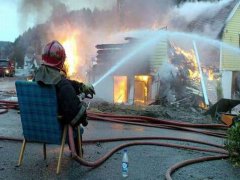 In popular mythology, police officers and firefighters are the heroes of society. One of the staples of journalism is the brave cop or firefighter who risks his life for others. Is it still true?
In popular mythology, police officers and firefighters are the heroes of society. One of the staples of journalism is the brave cop or firefighter who risks his life for others. Is it still true?
These days, it seems as though departmental “policies and procedures” in some places are conspiring to make it clear that the public’s safety is purely secondary to the job.
On Memorial Day, a suicidal man walked into San Francisco Bay and stood neck-deep for about an hour while about 75 people watched. Police and firefighters were called, but they refused to help when they saw the situation. The man took himself under the water and died while these “public safety” employees watched.
Police later said they didn’t know whether the man might be dangerous. Firefighters blamed budget cuts for the department not having proper training to go into the water to rescue the man. When asked whether he would go into the water to save a drowning child, the fire chief responded this way:
“Well, if I was off duty, I would know what I would do, but I think you’re asking me my on-duty response, and I would have to stay within our policies and procedures, because that’s what’s required by our department to do.”
This story is recounted by Steven Greenhut in the summer edition of City Journal, who makes the case that public safety is being endangered by state employee unionism. He argues that these “first responders” are being turned into the equivalent of bureaucrats. Ultimately, the state cares about the state and those who serve it, not about you.
 Third parties aren’t any better than two parties if they anoint rulers
Third parties aren’t any better than two parties if they anoint rulers If president can just ignore laws, what’s the purpose of having laws?
If president can just ignore laws, what’s the purpose of having laws?